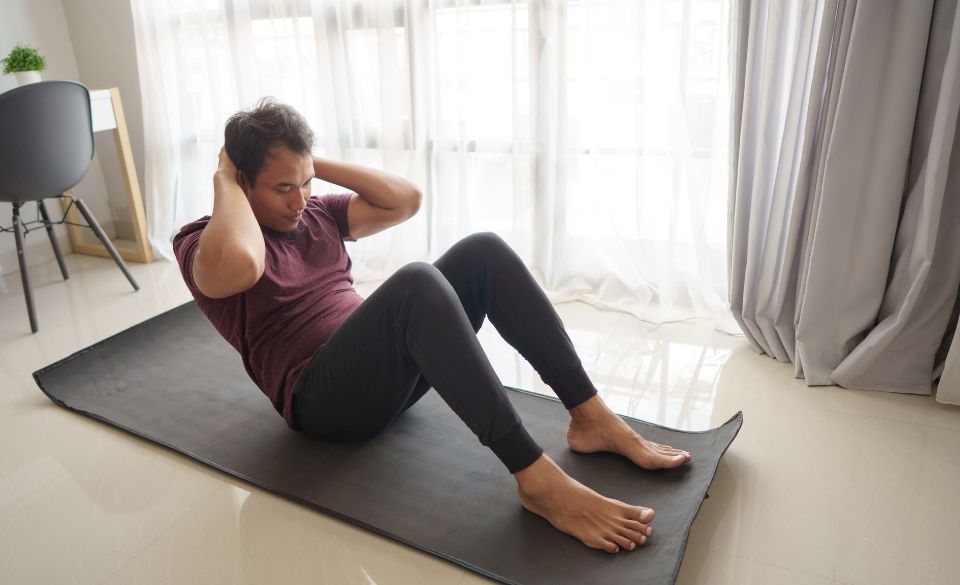
Best Abdominal Workouts For Runners
Page Contents
Are you looking to improve your running performance and enhance your overall strength and stability? Well, it’s time to give some love and attention to your abdominal muscles! Strong abdominals are not only crucial for a toned midsection but also play a vital role in supporting your running form and preventing injuries. In this article, we’ll explore the best abdominal workouts specifically designed for runners, backed by scientific studies, to help you take your running to the next level.
Why are strong abdominals important for runners?
Before we dive into the best abdominal workouts for runners, let’s understand why having strong abs is so important for your running performance. Your core, which includes your abdominal muscles, plays a central role in stabilizing your body during running. A strong core provides a solid foundation for your movement, allowing you to maintain proper posture, improve balance, and transfer force efficiently with each stride. Weak abdominals can lead to poor running form, reduced power output, and increased risk of injuries, such as lower back pain and hip instability.
Why should you include Abdominal Workouts in your training plan?
Now that we recognize the significance of strong abdominals for runners, let’s discuss why it’s essential to incorporate specific abdominal workouts into your training plan. Running alone is not enough to fully engage and strengthen your core muscles. By incorporating targeted abdominal exercises, you can isolate and activate these muscles, building strength and endurance that directly translates to improved running performance. Additionally, a strong core helps you maintain proper posture and alignment throughout long-distance runs, reducing fatigue and increasing efficiency.
Best Abdominal Workouts For Runners
1. Plank variations: Planks are highly effective for strengthening your entire core, including your rectus abdominis, transverse abdominis, and obliques. Begin with a basic plank, maintaining a straight line from your head to your heels while engaging your core muscles. As you progress, incorporate variations such as side planks, plank rotations, and plank leg lifts to challenge different muscle groups.
2. Russian twists: Russian twists target your oblique muscles, which are essential for rotational stability during running. Sit on the ground with your knees bent, lean back slightly, and lift your feet off the floor. Hold a medicine ball or dumbbell with both hands and twist your torso from side to side, touching the weight to the ground on each side.
3. Bicycle crunches: Bicycle crunches engage both your upper and lower abs, mimicking the pedaling motion while running. Lie on your back with your hands behind your head and bring your knees toward your chest. Alternate bringing your right elbow to your left knee while extending your right leg straight, and then switch to the other side.
4. Dead bug exercise: The dead bug exercise targets your deep core muscles, including the transverse abdominis. Lie on your back with your arms extended toward the ceiling and your knees bent at a 90-degree angle. Slowly lower one arm behind your head while straightening the opposite leg, keeping your lower back pressed into the ground. Return to the starting position and repeat with the opposite arm and leg.
How often should you train your abdominal muscles?
To see improvements in your abdominal strength and stability, aim to incorporate abdominal workouts into your training plan at least two to three times per week. Consistency is key, so make it a habit to prioritize your core workouts. It’s also important to allow your muscles to recover, so consider alternating your abdominal workouts with rest days or focusing on different muscle groups.
Remember, variety is important when training your abs. Mix and match the exercises mentioned above, and consider adding in other core-strengthening workouts such as Pilates or yoga. Additionally, always prioritize proper form and technique over the number of reps or sets. Quality over quantity will yield better results and reduce the risk of injury.
Additional Tips for Effective Abdominal Training
To further enhance the effectiveness of your abdominal workouts and maximize the benefits for your running performance, here are some additional tips to keep in mind:
1. Focus on Mind-Muscle Connection
When performing abdominal exercises, it’s crucial to focus on the mind-muscle connection. Pay attention to the muscles you’re targeting and consciously engage them throughout the movement. Visualize your core contracting and working with each repetition, rather than mindlessly going through the motions. This mental connection can help you activate the correct muscles and get the most out of your workouts.
2. Incorporate Stability and Balance Exercises
In addition to the traditional abdominal exercises mentioned earlier, incorporating stability and balance exercises can further enhance your core strength and overall stability. Exercises such as planks on an unstable surface (e.g., a stability ball or Bosu ball) or single-leg exercises like single-leg deadlifts or single-leg squats challenge your core muscles to work harder to maintain balance and stability.
3. Don’t Forget about the Back Muscles
While developing strong abdominal muscles is important, it’s equally essential to pay attention to the muscles in your back. Your back muscles, including the erector spinae and latissimus dorsi, work in conjunction with your abdominal muscles to provide stability and support during running. Incorporate exercises such as Superman holds or back extensions to strengthen your back and maintain muscle balance.
4. Integrate Core Activation into Your Runs
To truly integrate your strong core into your running performance, it’s beneficial to focus on core activation while you run. Practice engaging your abdominal muscles and maintaining good posture throughout your runs. Imagine a string pulling you up from the top of your head, keeping your spine tall and aligned. By consciously engaging your core while running, you’ll enhance your running form, increase stability, and promote efficient movement.
5. Listen to Your Body and Progress Gradually
As with any training program, it’s important to listen to your body and progress gradually. Start with exercises that challenge you but are still manageable. Gradually increase the intensity, duration, or difficulty of the exercises over time as your core strength improves. Remember that Rome wasn’t built in a day, and developing a strong core takes time and consistent effort.
6. Combine Abdominal Workouts with Full-Body Strength Training
While focusing on abdominal workouts is important, don’t neglect the rest of your body. Incorporate full-body strength training exercises into your routine to build overall strength and improve muscular balance. Compound exercises like squats, lunges, deadlifts, and rows engage multiple muscle groups, including your core, and can further support your running performance.
Final Words
Incorporating targeted abdominal workouts into your training plan is a game-changer for runners. By strengthening your core muscles, you’ll improve your running form, increase stability, and reduce the risk of injuries. Remember, consistency and proper form are key. Gradually progress the intensity and duration of your abdominal workouts, and always listen to your body. So, lace up your running shoes, grab a mat, and start giving your abs the attention they deserve.



